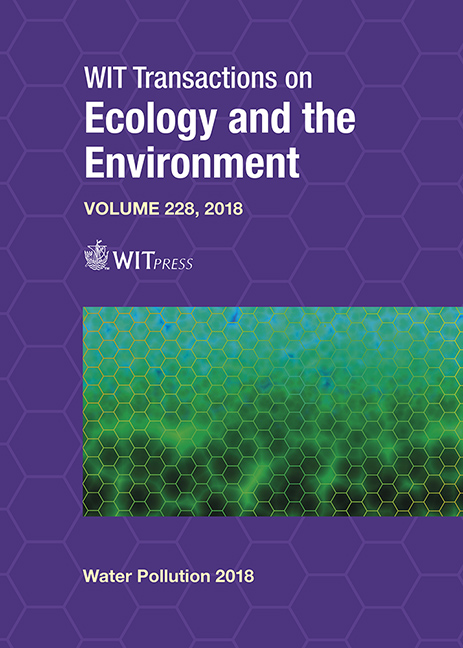QUANTIFYING THE SPATIO-TEMPORAL VARIABILITY OF WATER QUALITY IN AN URBANIZING PERENNIAL MEDITERRANEAN RIVER: THE CASE OF THE BEIRUT RIVER
Price
Free (open access)
Transaction
Volume
228
Pages
11
Page Range
187 - 197
Published
2018
Size
732 kb
Paper DOI
10.2495/WP180191
Copyright
WIT Press
Author(s)
SANIA EL-NAKIB, IBRAHIM ALAMEDDINE, MAJDI ABOU NAJM, MAY MASSOUD
Abstract
Rivers are increasingly being subjected to increased anthropogenic pollution stresses that are undermining their designated-uses and negatively affecting sensitive coastal areas. In this study, the water quality of the Beirut River, a poorly monitored seasonal Mediterranean River, is quantified. Water quality samples were collected on a regular basis over two consecutive years (2016 and 2017) from four sampling sites that represent a gradient of increased urbanization. The spatio-temporal variability of the physio-chemical (pH, Total Suspended Sediment (TSS), Nitrates-nitrites (NOx), sulfates (SO4-2), Total Phosphorus (TP), Total Nitrogen (TN), temperature, conductivity, chemical oxygen demand (COD) and bio-chemical oxygen demand (BOD)) and biological (fecal coliform and total coliform) pollution levels were statistically analysed in an effort to better understand the contribution of point and non-point pollution sources. The results showed significant yearly as well as seasonal variability and a high correlation between the measured pollution levels and river flow levels. Spatially, pollution levels appeared to correlate well with the urbanization levels in the basin. Future work will focus on modeling and further characterizing the pollutant loads reaching the Beirut River Basin. It is hoped that this study will give decision makers a better understanding of the water quality in the Beirut River and thus facilitate the development of an integrated comprehensive and transparent river basin management plan.
Keywords
spatial variation, temporal pattern, water quality, Beirut River, Lebanon





